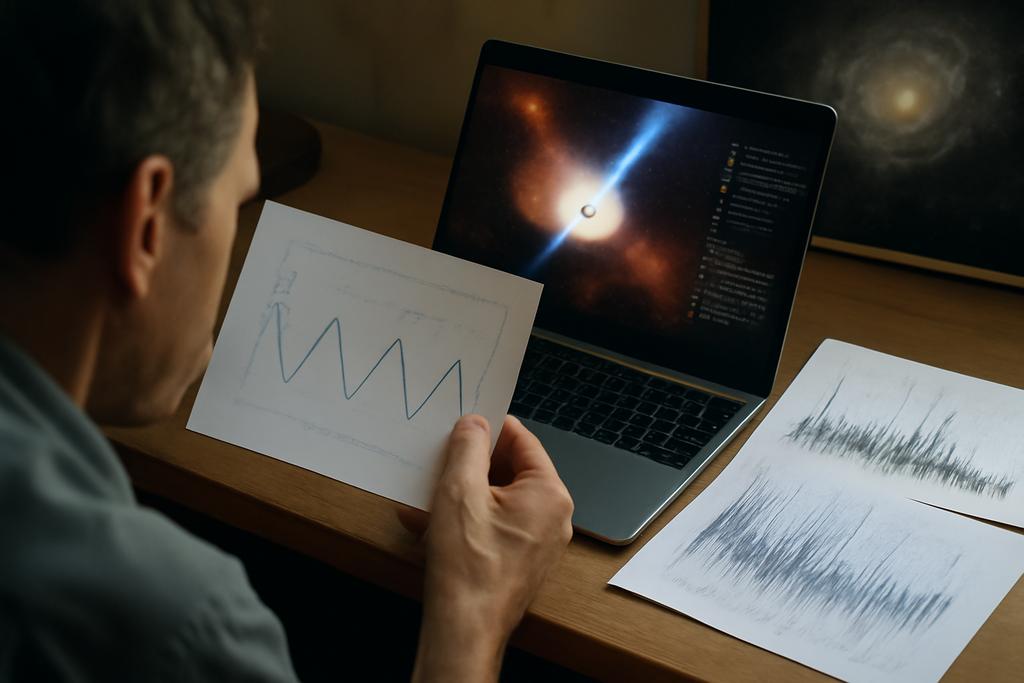The universe whispers secrets in the language of gravity. For years, scientists have listened intently, using pulsars – cosmic lighthouses with incredibly precise timing – as gravitational wave detectors. But the NANOGrav collaboration, a group of researchers at institutions across North America, has taken this listening to a new level. Their fifteen-year dataset, painstakingly collected from 68 millisecond pulsars, has allowed them to conduct the most sensitive search yet for something entirely unexpected: the faint gravitational signatures of free-floating objects (FFOs) in interstellar space.
The Phantom Dance of Rogue Planets
FFOs are celestial bodies – rogue planets, brown dwarfs, even large asteroids – that aren’t bound to any star. They wander the galaxy like cosmic nomads, and their existence is predicted by models of planetary formation. Think of the planets in our solar system as marbles in a bowl; some stay nestled together, while others, through gravitational jostling, get flung out entirely. This ejection process is thought to be remarkably common, scattering vast numbers of planets into the interstellar darkness.
The challenge, of course, is finding these hidden wanderers. They don’t emit their own light, so detecting them directly is tough. But these interstellar ghosts leave subtle clues in the timing of pulsar signals. As an FFO passes near a pulsar, its gravity tugs on the pulsar, ever so slightly altering its rotation and the arrival times of its pulses. This isn’t some Hollywood-style cataclysm; it’s a whisper of gravity, a tiny perturbation measured in millionths of a second. But over years of observation, this tiny irregularity accumulates, creating a detectable signal.
Listening to the Silence
The NANOGrav researchers, led by Lankeswar Dey, developed a sophisticated model to look for these incredibly faint gravitational interactions within their data. Their analysis focused on the timing residuals, the slight discrepancies between observed and predicted pulse arrival times. In essence, they were listening for the subtle hum of an FFO’s passage.
The results, though negative in terms of a direct detection, are still immensely valuable. The absence of a detectable signal lets scientists place strong limits on the number density of FFOs – essentially, how many of these rogue objects are floating around near our sun. The findings provide crucial constraints on FFO populations, showing upper limits on their number density as a function of mass. For instance, the study sets an upper limit on the number density of Jupiter-mass FFOs, a figure that can be refined with more data.
More Than Just Planets
The search for FFOs goes beyond the hunt for rogue planets. Scientists suspect that primordial black holes (PBHs), relics from the very early universe, might also constitute a significant portion of dark matter. PBHs are notoriously difficult to detect, but their gravitational effects, like those of FFOs, could be detectable through pulsar timing. Although PBHs are not generally considered FFOs, this study considers any celestial object not gravitationally bound to a star and traveling through interstellar space as an FFO.
The study’s significance extends beyond the specific results. It highlights the power of pulsar timing as a tool to explore the hidden universe. Pulsars are not just cosmic clocks; they are sensitive gravitational probes capable of detecting events we can’t observe in any other way. The NANOGrav collaboration’s work opens up a completely new window into the interstellar realm, potentially allowing us to detect and map the distribution of FFOs in the galaxy.
The Future of Cosmic Listening
The quest to understand the population of FFOs is far from over. The current upper limits are still quite broad, offering a significant amount of room for interstellar objects that are simply too faint for current technology to detect. Future, more sensitive observations, potentially using upcoming telescopes like the Square Kilometer Array, will undoubtedly yield more precise constraints, and perhaps even the first direct detection of the gravitational pull of an interstellar vagabond.
This research, conducted by the NANOGrav collaboration, represents a significant advancement in our understanding of the hidden universe. By leveraging the incredible precision of pulsar timing, we’re starting to piece together a richer, more nuanced picture of the galaxy’s contents. The whispers of gravity continue, and we’re only beginning to understand what they’re telling us.










